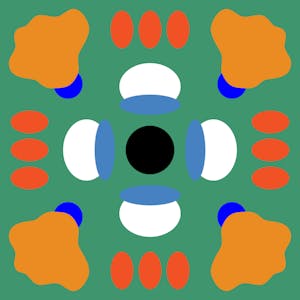Introduction to Imagemaking
This course for serious makers, and for students new to imagemaking. Imagemaking is a fluid and exciting area of graphic design that comes out of practice and process: experimenting fearlessly, showing and sharing ideas, and giving and receiving knowledgeable and constructive input.For the sake of this online platform, we have applied some structure to our investigations, but for the most part imagemaking is loose and unstructured. If we must adopt a rule in this course it is only this: you will not become a graphic designer by watching videos alone. Or, don’t just make stuff just in your head. So here, the focus here is on making, and you are expected to devote serious time and intellectual energy to that activity in this course. Specifically, you will:
- experiment with a range of materials and techniques to make images for graphic design
- expand your visual vocabulary both in terms of making and talking about work, in order to discuss your work and work of others
- learn how to make, manipulate and arrange images to create compositions, eventually culminating in the design and production of an-image-based book.
The first half of the course is an opportunity to experiment and explore imagemaking in order to expand your visual vocabulary. You will create pieces that are expressive, meditative, or ‘design-y’ to instigate, evoke, experiment, record, explain, or try out a media.
In the second two weeks, we’ll invite the images to deliberately and intentionally carry meaning and communication through relational moves like juxtaposition, composition, and context. We’ll look at developing and expanding the range of approaches for putting things together by composing page spreads with your images. Since nothing exists without context, we look at how to intentionally drive the image’s connotations, meanings, and associations generated through elements of composition and “visual contrasts.” Ultimately, we will take the images that you create and make a book from them.
The results of your assignments (and experiments) may generate something completely unknowable now or in the future—and that’s the goal.
Make informed design choices using image-based research
Create ranges of representation using images
Compose spreads for your own book
Design a book with your own images
Syllabus
Syllabus - What you will learn from this course
Week 1
Week 1: Image-based Research
Week 2
Week 2: Making Images
Week 3
Week 3: Composition is Relational
Week 4
Week 4: Designing a Book with Your Images
FAQ
When will I have access to the lectures and assignments?
Access to lectures and assignments depends on your type of enrollment. If you take a course in audit mode, you will be able to see most course materials for free. To access graded assignments and to earn a Certificate, you will need to purchase the Certificate experience, during or after your audit. If you don't see the audit option:
What will I get if I subscribe to this Specialization?
When you enroll in the course, you get access to all of the courses in the Specialization, and you earn a certificate when you complete the work. Your electronic Certificate will be added to your Accomplishments page - from there, you can print your Certificate or add it to your LinkedIn profile. If you only want to read and view the course content, you can audit the course for free.
Is financial aid available?
Yes. In select learning programs, you can apply for financial aid or a scholarship if you can’t afford the enrollment fee. If fin aid or scholarship is available for your learning program selection, you’ll find a link to apply on the description page.
Reviews
Really enjoyed this course and it pushed me to think about the application of the design. In this case, I learned a lot about composing spreads for books which was something very new to me.
It is a great course for beginners who are seeking to learn more about the image making strategies and also for people interested to pursue a career in graphic designing.
I really loved this course. Useful information presented in an attractive format. Hands on approach. It opened my mind regarding a lot of possible applications in different areas of life.
The pacing of the course was just right, the instructor was knowledgeable, and the presentation of the subject matter was very pleasant, due to Gail Swanlund's easy-going demeanor.
